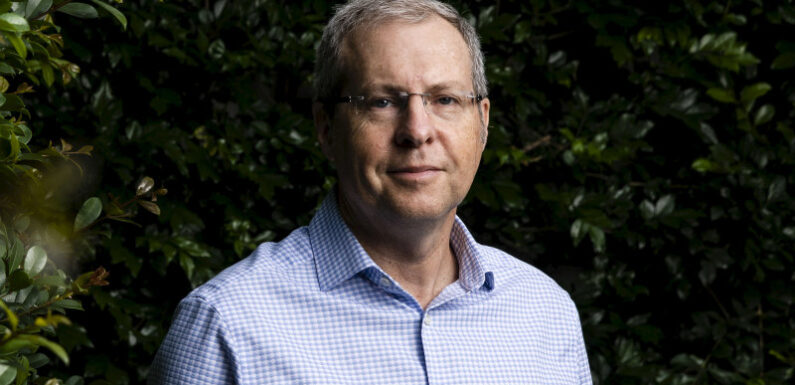
Save articles for later
Add articles to your saved list and come back to them any time.
There will be at least another six months of tough economic pain for households as inflation, interest costs and tax continue to batter budgets in the first half of 2024, but one of the country’s top economists says conditions will begin to improve in the run-up to next Christmas.
Commonwealth Bank’s chief economist Stephen Halmarick said the ongoing fall in consumer spending as households prioritise necessities is helping to slow economic growth, which will help bring inflation down faster than currently forecast by the Reserve Bank.
Stephen Halmarick said the first half of next year will remain tough for households, but things will get easier soon.Credit: Dominic Lorrimer
“Through the second half of next year into 2025, things could improve relatively quickly,” he said.
The central bank, which has lifted interest rates to a 12-year high of 4.35 per cent, forecasts inflation will reach the top of its target 2-3 per cent range by the end of next year, while Commonwealth Bank forecasts it will reach 3 per cent by the end of next year.
That will be good news for households, as cost-of-living pressures have put significant strain on incomes – pressure that will continue for the first half of 2024.
“For at least the first six months of next year, the factors that are leading to this reduction in net house and real disposable income will remain in place – inflation, taxes, higher interest rates. So real household disposable income is likely to remain negative for at least the first half of next year,” Halmarick said.
The potential stress building in the economy from that drop in spending power would weigh on households and the economy in the first half of next year, but Halmarick said that would come with some benefits.
“The silver lining in that is it should continue to bring inflation down relatively quickly, and we think that will be enough to get the Reserve Bank to start easing monetary policy by September,” he said.
Commonwealth Bank expects the RBA to start cutting interest rates in September, delivering three-quarters of a percentage point worth of rate cuts before next Christmas and a further three-quarters of a percentage point in cuts in early 2025.
The bank also forecasts wages will grow by 3.6 per cent by the end of next year, and Halmarick said the stage 3 income tax cuts that will come into effect from July 1 will also boost household budgets.
“The combination of some tax cuts, lower inflation, interest rates starting to decline by the fourth quarter next year will mean real household disposable income growth will become positive,” he said.
“And that holds out the prospect of a much better end to 2024 and start to 2025. But for the first half of 2024, it’s still going to feel pretty tough for many Australians.”
The unemployment rate is also forecast to rise – the RBA forecasts it to reach 4.3 per cent in 2025, while the CBA forecasts it to hit 4.6 per cent by the end of 2024.
But Halmarick said that increase in unemployment does not necessarily mean there will be a rise in job losses, as more migrants will continue to swell the ranks of job seekers next year at the same time as the creation of new jobs slows.
Australia has gone through significant economic turmoil over the past two years following the end of pandemic border closures and restrictions, with inflation rising to a peak of about 8 per cent and the Reserve Bank responding by rapidly lifting interest rates.
Halmarick said the coming year will be just as tricky for the RBA as it works to slow the economy without driving it into a recession.
“Timing the rate cuts to engineer the soft landing that we’re all looking for is not an easy task, so the new governor and the new monetary policy board is going to need to be pretty nimble to get the balance right,” he said.
Cut through the noise of federal politics with news, views and expert analysis from Jacqueline Maley. Subscribers can sign up to our weekly Inside Politics newsletter here.
Most Viewed in Politics
From our partners
Source: Read Full Article
